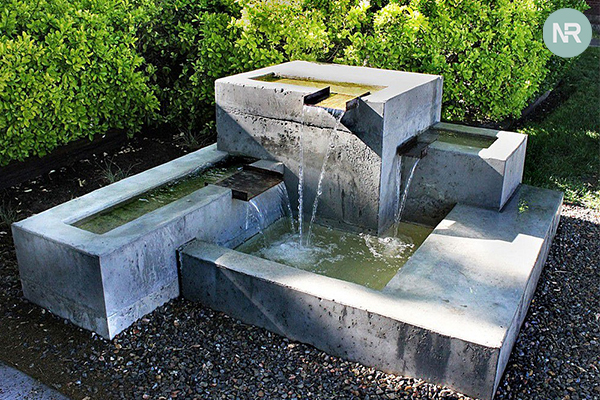Learn effective steps on how to clean algae from your concrete fountain easily.
HOME >> Product Guide >> Water Fountain

Many types of water fountains are available in the market; the concrete fountain is one of them. These fountains are usually made of concrete mixed with other materials. Concrete water fountains can also be made at home. Fountains made of concrete are heavy and cost a bit more. So the fountains are used as outdoor fountains, but there are small tabletop fountains that are suitable for indoors. The sound of running water in a concrete fountain is much more soothing. But if the fountains are clogged with dirt or the water is wasted, the sound of the water is not good. Fountains made of concrete tend to have high levels of algae which are difficult to clean. So here we will show you how to easily clean algae from concrete fountains.
Concrete fountains can be made at home if you want, but if you buy from the marketplace, they are smooth-coated to keep dirt free. But after some time of use, the dirt slowly starts to settle. Algae settle along with hard stains and spoil the beauty of the fountain. In this case, concrete causes more algae because concrete fountains are cool. Also, many reasons there are for algae accumulation are given below.
See also: How to Clean a Fountain with Vinegar
Prepare a mixture of bleach to clean concrete fountains. If the mixture is not good, the fountain will not clean well. The best ratio for mixing bleach to water is 9:1. Mix well after adding bleach water. Making the mixture may take up to 1 hour, but it depends on the size of the fountain. A small tabletop fountain takes 30 minutes to clean.
Dispose of old water from fountains to clean concrete fountains. After draining the water, remove the pump and motor tube from the motor. If the amount of algae is high, remove the algae from the basin with a pressure hose before cleaning for easy cleaning later.
It is important to clean the pump and tubing after removing them from the fountain. Also, if the fountain has a light, it needs to clean, as being in water can cause algae to build up on the light. Pump and tube submerge for 10 minutes into the mixed bleach water. Then remove the algae and clean the tube and pump using a pressure attachment hose. After cleaning well, dry all the parts in the sun.
Concrete fountains are best cleaned with chlorine bleach as this chemical does not harm concrete. Safety must follow to avoid any harm to the environment or any animals. Add bleach to the sink before cleaning. Also, give the fountain outside. It will remove all other stains on the fountain and make it new. Wait 30 minutes with bleached water to separate the algae from the fountain. Then scrub the basin thoroughly with a stiff toothbrush and scrub the exterior thoroughly.
After cleaning, rinse the fountain thoroughly with clean water several times to ensure no chemicals remain in the basin. After cleaning well, if you see small areas of algae, clean them with a scrub brush. Allow the fountain to dry in the sun after cleaning thoroughly, as using the fountain in wet conditions will cause algae to grow quickly. So it is better to use it after keeping it in the sun for a few hours.
After drying the fountain well, set everything in the fountain. After setting, fill the fountain with enough water in the fountain. Then turn on the motor and enjoy the sound of the fountain water flow. Change the water regularly and use the necessary materials to maintain the beauty of the fountain afterwards.
Below are some ways to keep concrete fountains free of algae.
[Note] If you use distilled water in an indoor fountain does not grow algae.

Top 20 Best Bird Baths -Top Picks
Read More »